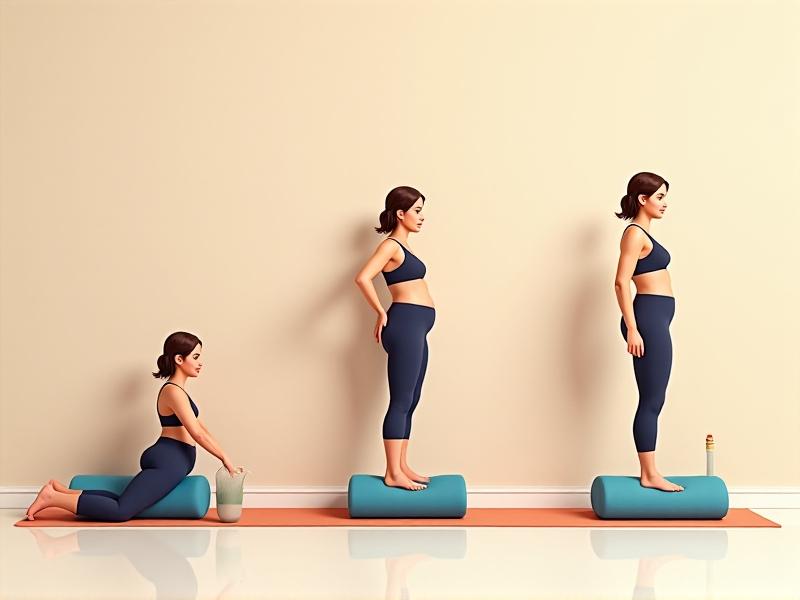Foam Rolling Protocols for Diastasis Recovery
Understanding Diastasis Recti: The Basics
Diastasis Recti is a condition where the abdominal muscles separate, often occurring during or after pregnancy. This separation can lead to a range of issues, including lower back pain, poor posture, and a protruding belly. Understanding the anatomy and mechanics of Diastasis Recti is crucial for effective recovery. The rectus abdominis muscles, commonly referred to as the "six-pack," are connected by a band of tissue called the linea alba. When this tissue stretches excessively, it can result in a gap between the muscles, leading to Diastasis Recti.
Recovery from Diastasis Recti involves more than just traditional abdominal exercises. In fact, certain exercises can exacerbate the condition if not performed correctly. This is where foam rolling comes into play. Foam rolling can help improve posture, increase blood flow, and promote healing by targeting the fascia and surrounding tissues. By incorporating foam rolling into your recovery protocol, you can enhance the effectiveness of your rehabilitation efforts and accelerate the healing process.

The Science Behind Foam Rolling and Recovery
Foam rolling is a form of self-myofascial release that targets the fascia, the connective tissue that surrounds muscles, bones, and organs. By applying pressure to specific areas, foam rolling can help release tension, improve flexibility, and increase blood flow. This is particularly beneficial for individuals recovering from Diastasis Recti, as it can help reduce pain and promote healing in the affected area.
Research has shown that foam rolling can improve range of motion, reduce muscle soreness, and enhance overall muscle function. When applied to the abdominal region, foam rolling can help release tension in the fascia surrounding the rectus abdominis muscles, allowing them to move more freely and reducing the gap caused by Diastasis Recti. Additionally, foam rolling can help improve posture by releasing tension in the muscles of the back and hips, which can become tight and overactive as a result of the abdominal separation.

Creating a Foam Rolling Protocol for Diastasis Recovery
Developing a foam rolling protocol for Diastasis Recti recovery involves selecting the right exercises and techniques to target the affected area effectively. Start by choosing a foam roller that is firm enough to provide adequate pressure but not so hard that it causes discomfort. Begin with gentle rolling motions over the abdominal area, focusing on the rectus abdominis muscles and the surrounding fascia.
As you become more comfortable with foam rolling, you can incorporate more advanced techniques, such as cross-fiber rolling and trigger point release. These techniques can help release deeper layers of tension and promote healing in the affected area. It's important to listen to your body and avoid applying too much pressure, as this can cause further damage. Consistency is key when it comes to foam rolling for Diastasis Recti recovery. Aim to incorporate foam rolling into your daily routine, even if it's just for a few minutes each day.

Incorporating Foam Rolling into a Comprehensive Recovery Plan
While foam rolling is an effective tool for Diastasis Recti recovery, it should be used in conjunction with other rehabilitation techniques to achieve the best results. A comprehensive recovery plan should include exercises to strengthen the core muscles, improve posture, and promote overall stability. Pilates, yoga, and specific core-strengthening exercises can be particularly beneficial for individuals recovering from Diastasis Recti.
In addition to exercise, it's important to focus on proper nutrition and hydration to support the healing process. Adequate protein intake is essential for muscle repair, while staying hydrated can help maintain the elasticity of the fascia and surrounding tissues. Finally, don't underestimate the importance of rest and recovery. Giving your body time to heal is crucial for long-term recovery and preventing further complications.
Common Mistakes to Avoid When Foam Rolling for Diastasis Recovery
While foam rolling can be a powerful tool for Diastasis Recti recovery, there are some common mistakes that can hinder progress or even cause further damage. One of the most common mistakes is applying too much pressure. While it's important to apply enough pressure to release tension, excessive pressure can cause bruising or further damage to the abdominal muscles and fascia. Start with gentle pressure and gradually increase as your body becomes more accustomed to foam rolling.
Another common mistake is rolling too quickly. Foam rolling should be done slowly and deliberately, allowing the pressure to penetrate deep into the muscles and fascia. Rolling too quickly can reduce the effectiveness of the technique and increase the risk of injury. Finally, it's important to avoid rolling directly over the gap caused by Diastasis Recti. Instead, focus on the surrounding muscles and fascia to promote healing and reduce tension in the affected area.
Success Stories: Real-Life Experiences with Foam Rolling for Diastasis Recovery
Hearing from others who have successfully used foam rolling for Diastasis Recti recovery can be incredibly motivating and informative. Many individuals have found that incorporating foam rolling into their recovery plan has helped them achieve significant improvements in their abdominal strength, posture, and overall well-being. One success story comes from Sarah, a mother of two who struggled with Diastasis Recti after her second pregnancy.
Sarah began incorporating foam rolling into her daily routine, focusing on the abdominal area and surrounding muscles. Over time, she noticed a significant reduction in the gap between her abdominal muscles and an improvement in her core strength. She also found that foam rolling helped alleviate the lower back pain she had been experiencing. Sarah's story is just one example of how foam rolling can be a valuable tool in the recovery process for Diastasis Recti.
Tips for Maintaining Progress and Preventing Recurrence
Once you've made progress in your Diastasis Recti recovery, it's important to take steps to maintain your results and prevent recurrence. Continue incorporating foam rolling into your routine, even if it's just for a few minutes each day. This will help keep the fascia and surrounding muscles supple and reduce the risk of tension building up again.
In addition to foam rolling, focus on maintaining a strong core and good posture. Regularly perform core-strengthening exercises and be mindful of your posture throughout the day. Avoid activities that put excessive strain on the abdominal muscles, such as heavy lifting or high-impact exercises, until you're confident in your core strength. Finally, listen to your body and give yourself time to rest and recover when needed. Recovery is a journey, and taking care of your body is essential for long-term success.








